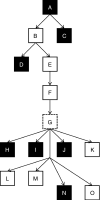Peracetic acid-based disinfectant is the most appropriate solution for a biological decontamination procedure of responders and healthcare workers in the field environment
- PMID: 33590580
- PMCID: PMC8451822
- DOI: 10.1111/jam.15041
Peracetic acid-based disinfectant is the most appropriate solution for a biological decontamination procedure of responders and healthcare workers in the field environment
Abstract
Aims: An effective decontamination procedure of personnel wearing personal protective equipment is required by CBRN responders and healthcare workers when dealing with biological warfare agents or natural outbreaks caused by highly contagious pathogens. This study aimed to identify critical factors affecting the efficacy of peracetic acid (PAA)-based disinfectants and products containing either hydrogen peroxide or sodium hypochlorite under the same conditions.
Methods and results: The influence of concentration, application (contact) time, erroneous human behaviour, interfering substance, technical assets and weather conditions on disinfection efficacy against Bacillus subtilis spores were assessed in 14 experimental groups. Residual contamination of protective suits was measured to provide responders with readily understandable information (up to 100 colony forming units classified a suit as disinfected). Weather conditions, short application time and erroneous human behaviour substantially affected the effectiveness of PAAs (P < 0·05). Non-PAA-based disinfectants (either liquid or foam) did not reach comparable efficacy (P < 0·001).
Conclusions: Peracetic acid was effective at a concentration of 6400-8200 ppm and an application time of 4 min.
Significance and impact of the study: The study provides operationally relevant data for the use of PAA-based disinfectants in preparedness planning and management of biological incidents and natural outbreaks.
Keywords: CBRN responders; antimicrobials; bacillus; bacterial spores; biocontrol; decontamination; disinfection; erroneous behaviour; peracetic acid; personal protective equipment.
© 2021 The Authors. Journal of Applied Microbiology published by John Wiley & Sons Ltd on behalf of Society for Applied Microbiology.
Conflict of interest statement
Authors declare no competing interests.
Figures
References
-
- Anon. (2011) Technical Brief: Evaluation of Liquid and Foam Decontamination Technologies for Surfaces Contaminated by Bacillus anthracis Spores, vol No. 600S11003. Washington, D.C.: U.S. Environmental Protection Agency.
-
- Anon. (2013) Bio‐Response Operational Testing and Evaluation (BOTE) Project ‐ Phase 1: Decontamination Assessment, vol No. 600/R–13/168. Washington, D.C.: U.S. Environmental Protection Agency.
-
- Anon. (2018) Spray Nozzle Classification by Droplet Spectra. (No. 572.2). ASABE. https://webstore.ansi.org/Standards/ASABE/ANSIASABES572FEB2020. Accessed 28 Nov 2020.
-
- Archer, J., Karnik, M., Touati, A., Aslett, D. and Abdel‐Hady, A. (2018) Evaluation of Electrostatic Sprayers for Use in a Personnel Decontamination Line Protocol for Biological Contamination Incident Response Operations, No. EPA/600/R‐18/283. Washington, D.C.: U.S. Environmental Protection Agency.
MeSH terms
Substances
Grants and funding
LinkOut - more resources
Full Text Sources
Other Literature Sources
Molecular Biology Databases
Research Materials


